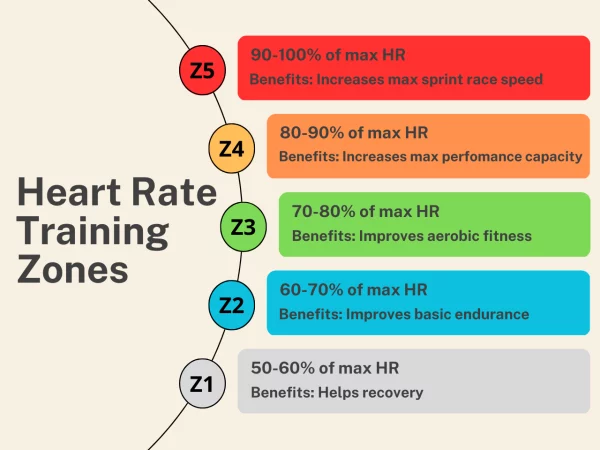Fat-burning heart rate is a frequently mentioned concept when discussing how to optimize weight loss and improve cardiovascular health. This is the ideal heart rate during exercise, where the body efficiently converts stored fat into energy. However, understanding the mechanism and application of this concept is crucial to fully harness its benefits.
During exercise, the heart rate gradually increases from the resting rate (60–100 beats per minute) to the maximum rate. The basic formula to calculate the maximum heart rate is 220 minus your age. For example, for a 40-year-old individual, the maximum heart rate would be 180 beats per minute. The fat-burning heart rate typically falls within 50–70% of the maximum heart rate. In this case, the fat-burning zone would range from 90–126 beats per minute. According to the American Heart Association (2020), maintaining exercise in this zone allows the body to use fat as the primary energy source.

The benefits of the fat-burning heart rate extend beyond just fat loss. When the body operates in this zone, the muscles work sufficiently without excessive fatigue, allowing for sustained exercise over longer periods. The American Council on Exercise (2019) also noted that training in this zone is an optimal choice for beginners or those aiming for long-term weight loss goals.
However, maintaining a fat-burning heart rate does not always yield the most effective results. A study published in the Journal of Applied Physiology (2009) revealed that exercising at a higher heart rate, within the “cardio zone” (70–85% of maximum heart rate), can burn more overall calories. This implies that while the fat-burning zone has its benefits, combining different heart rate zones can lead to more comprehensive weight loss and fitness improvements.
“While the fat-burning heart rate provides a solid foundation for weight loss, it is crucial to vary workout intensities to achieve optimal health.” – American Council on Exercise, 2019
Additionally, the formula for calculating maximum heart rate based on age is not always entirely accurate. Factors such as current fitness level, medical history, and exercise habits all influence an individual’s ideal heart rate zone. The American College of Sports Medicine (2020) recommends consulting a specialist or trainer to develop a safe and effective exercise program.

While the fat-burning heart rate can be a useful tool, the most important factor remains consistent exercise combined with a variety of workouts. Activities like brisk walking, cycling, or yoga can help maintain a steady heart rate, while running or HIIT (high-intensity interval training) can enhance calorie-burning efficiency. With persistence and proper understanding, you can optimize your workouts and achieve your health goals.


HPX24h > Fitness > Fat-Burning Heart Rate: The Key to Optimizing Your Workout
Tagged Articles
What is the Ideal Heart Rate for Running?
Top Reads from This Category
Fitness
Rest the Right Way: When to Take a Rest Day and How to Spend It?
Fitness
Which Exercise Burns the Most Calories? Tips for Choosing and Training Effectively
Fitness
Tai Chi: The Secret to Improving Balance and Relieving Pain Effectively
Fitness
Physical Training: The Key to Preventing Nerve Damage During Chemotherapy
Fitness
More Flexible – The Secret to Longevity?
Fitness
Mesomorph: The Key to Unlocking Your Body’s Natural Strengths
Fitness
How Often Should You Work Out Each Week for Effective Weight Loss and Muscle Gain?
Discover New Topics
Animals
The Care of Offspring: The Reproductive Secrets of Guppies
Parenting Tips
How to Prevent a 2-Year-Old from Throwing Things?
Health
Exploring How Microplastics Enter the Body and Affect Health
Healthy Eating
Effectively Lower Blood Pressure with 4 Common Kitchen Vegetables
Animals
Stickleback Fish’s Secret to Adapting from Saltwater to Freshwater: How Genetic Mutations Enable Remarkable Adaptation
Healthy Eating
Vegan Keto Diet: Everything You Need To Know
Animals
Male Spiders Sacrifice Themselves to Protect Future Generations
Science
A New Drug Could Treat Depression Within Just 24 Hours
Fitness
Muscles: The Golden Key to Effective Health and Performance
Space
Three Earth-Like Planets That Could Support Life: New Discovery from NASA
Animals
The Potential of Black Mamba Venom in Developing New Painkillers
Health
Chemicals in Cosmetics That Could Increase Breast Cancer Risk – Did You Know?
Space
18 New Planets: Unlocking the Gateway to Exploring Giant Star Systems